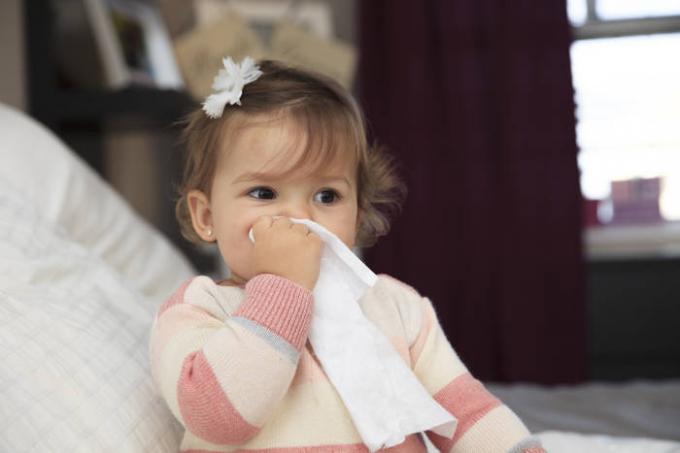According to statistics, about 13-15% of the children suffer from allergic rhinitis. It is important to learn to distinguish between viral or bacterial rhinitis allergy
Cold season often presents baby "snotty" gifts. Almost always this disease without any treatment takes place in a week or two, but sometimes delayed up to a month or more. Often in such cases, the parents start treatbaby popular methods on the advice of friends or medicine on the advice of pharmacists from pharmacies. Such treatment without a professional diagnosis can give the opposite effect, because the prolonged cold can be allergic.
Perpetrators of the common cold
Runny nose - it is nothing but an attempt of the body to remove an agent that interferes with normal breathing. This agent may be viruses, bacteria and allergens.
- Viruses - the most frequent cause of the common cold. Isolation liquid, transparent.
- The bacteria attack the body to the weakening of local immunity and happily join the viral infection. If a bacterial infection in a child thicker discharge, yellow or green.
- Allergens cause reactions not only on the skin. Children are prone to atopic dermatitis, often suffer from rhinitis. Allergic rhinitis on the external manifestations of his was no different from the virus. To make an accurate diagnosis, several factors should be compared.

How to distinguish allergic rhinitis from 7 major signs / istockphoto.com
7 differences runny nose from allergies
The first basis for diagnosis, "allergic rhinitis," Dr. receives after a detailed survey parents who brought the child to the doctor complaining of a long and not amenable to conventional treatment runny nose. Here are the main points on which in the course of the conversation will focus.
- Temperature Body temperature with allergic rhinitis have no more than 37,5 ° C, it is sometimes not at all. When viral - often rises above 38 ° C.
- The general condition of the child in allergic rhinitis remains in the normal range: baby loses appetite does not complain of a headache or aching in the bones. This characteristic signs of a cold, but not allergies.
- Allergic rhinitis may increase or decrease during the day, depending on external circumstances. Almost imperceptible in the morning, it can occur after, for example, an evening swim. Or, reaching its maximum intensity in the morning, almost disappearing in the evening. catarrhal rhinitis such pronounced amplitudes usually do not demonstrate.
- The presence of so-called allergic salute In allergic rhinitis, the child usually feels severe itching in the back of the nose, which forces it to wrinkle his nose and rubbing his characteristic gesture - the so-called allergic salute. Please pay attention to it.
- The nature of sneezing Common cold is accompanied by a deep one, maximum two-single "sneezing." Allergic rhinitis can cause multiple (more than 5-10 times) attempts to free the nasal passages of the interfering free breathing allergen. Sneezing with the surface, quietly.
- Appearance Child Under the eyes of the crumbs, allergic rhinitis, there may be quite noticeable dark circles on the cheeks - a characteristic rash.
- Associated symptoms Allergic rhinitis is often accompanied by a tear, photophobia, distorted sense of smell.
The totality of all these symptoms with a fairly high degree of probability suggests that a child has allergic rhinitis. To clarify the diagnosis needed lab tests.
Also you will be interested to read this: how to get rid of the common cold: 7 Effective Tips

